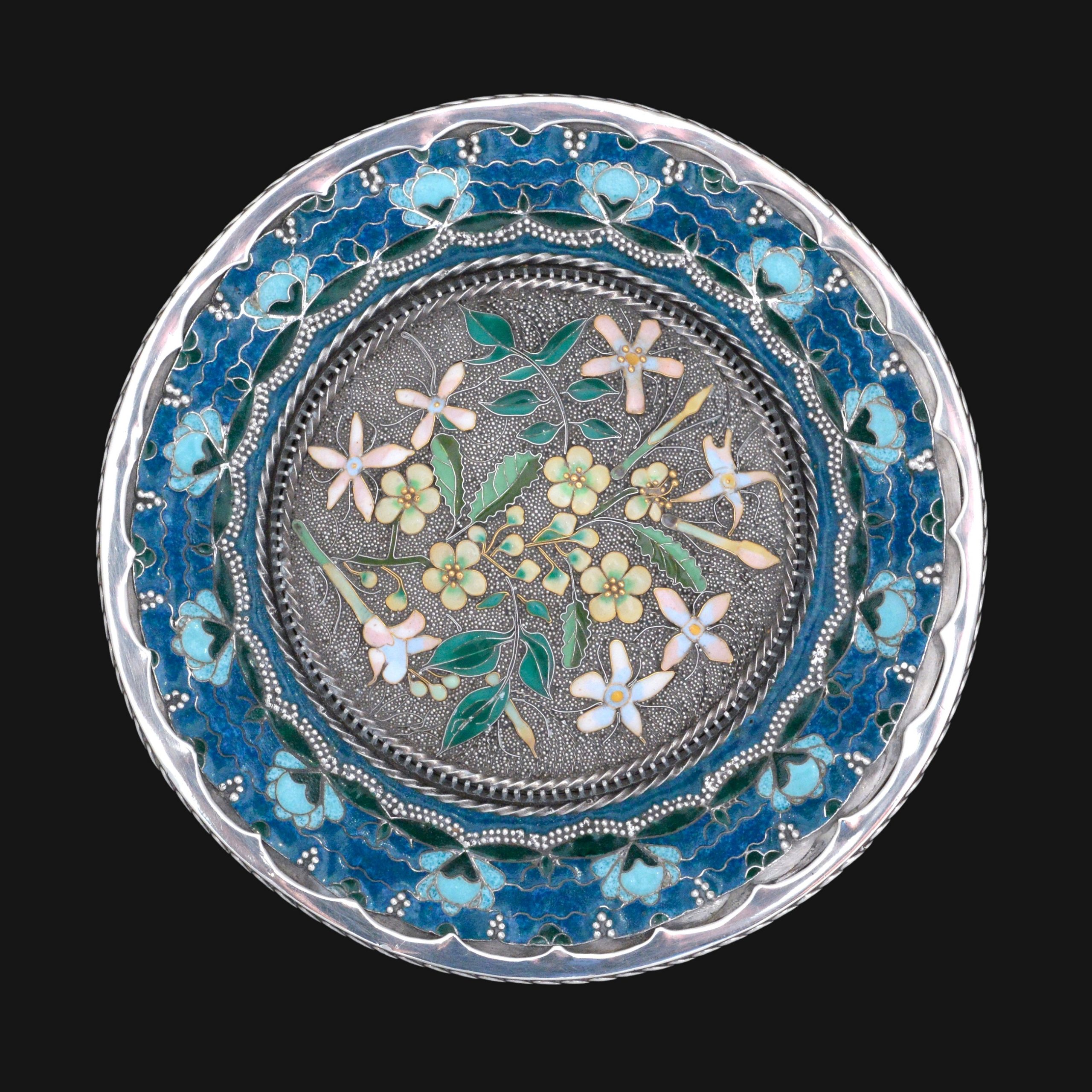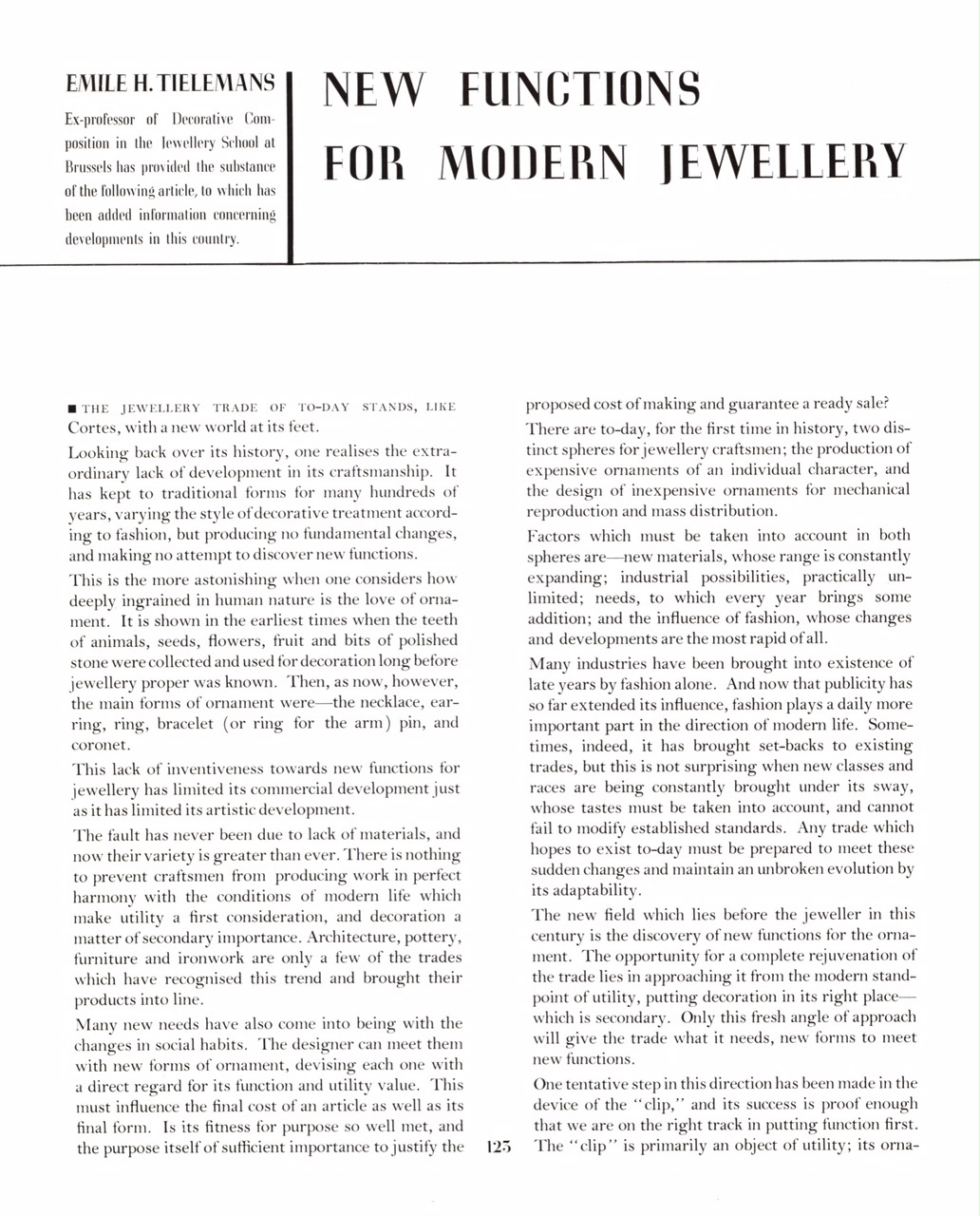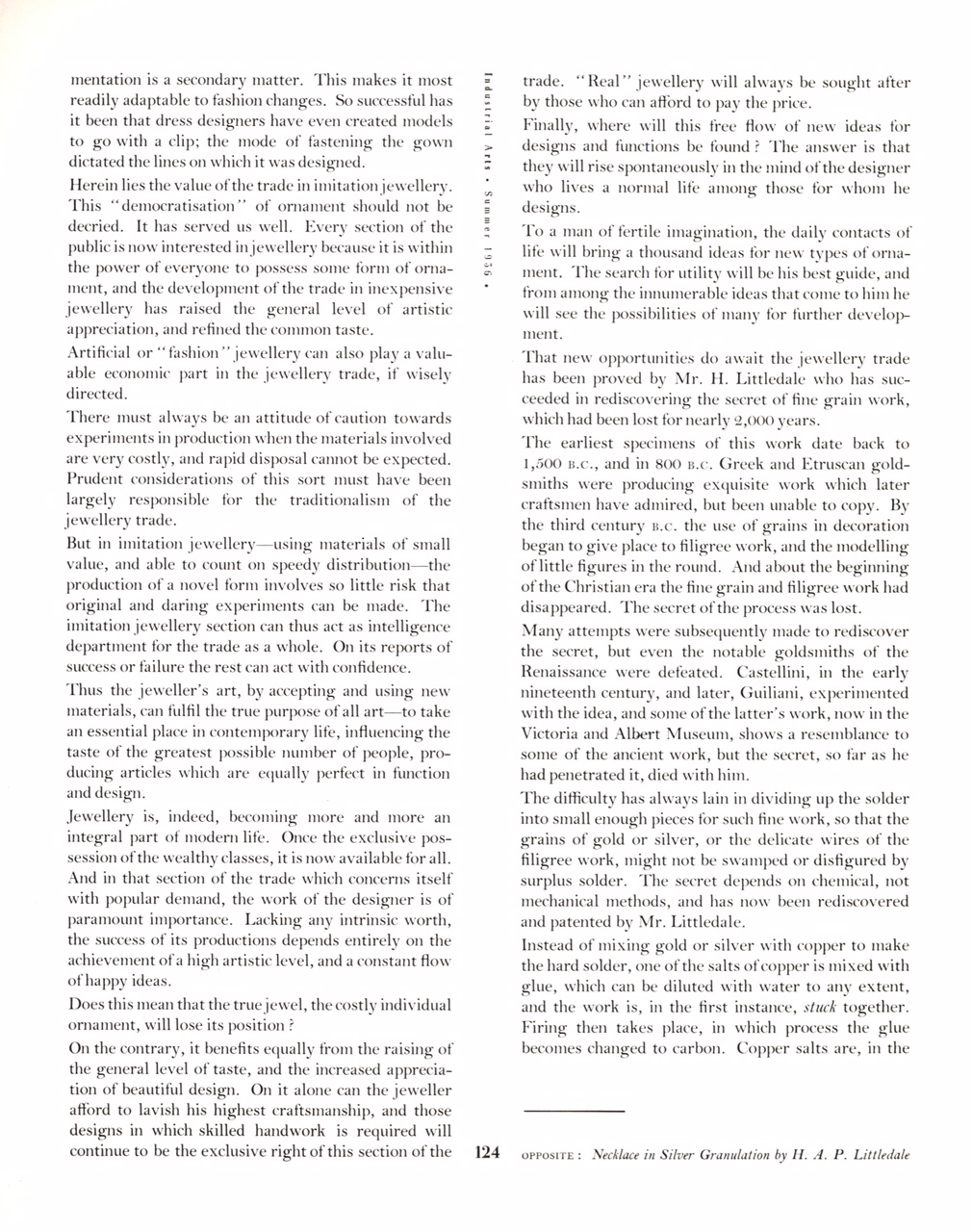A rare British Cloissone enamel box by Henry Littledale
I am really delighted to present this exquisite silver cloisonné enamelled box by a very interesting jeweller/silversmith who has largely been forgotten.
The box is fully hallmarked for London 1945 with makers mark H.A.P.L. This mark is for Henry Ambrose Pudney Littledale. The lid of the box is augmented with extremely high quality cloisonné blue, green, yellow and pink floral enamel. The box is in near mint condition and is a very good gauge of silver. All the seams have applied delicate wirework.
The lid has been made in two parts with the enamel fixed into the lid with silver battons. It is a masterpiece of workmanship and undoubtedly uses the revival granulation technique Littledale invented as described below.
Major H.A.P Littledale (1881 – 1966), as he apparently liked to be known, was a minor aristocrat and officer in the army from 1901 to 1919. An unlikely start for a jeweller, silversmith, enamellist and inventor. He retired from the army to Devon near Barnstaple and at some time in around the 1920’s or early 1930’s he takes up metalworking and by 1935 is an active member of the later arts and crafts movement. His work was displayed at the Royal Birmingham Society of Artists Crafts Exhibition 1935 and he was both a Craft Member and Exhibitor at the 1938 Arts and Crafts Exhibition Society. He registered his mark at the London assay office in 1937.
His work is extremely rare – I have had one other piece by him at A1024, now sold and in the archive. His importance does not stem from his work as such, but from his development and patent in 1933 of a new technique for hard soldering that allowed refined granulation techniques in silver and gold (patent number 415181, 23rd March, 1933).
Such was the significance of this development that he gave a series of lectures at Goldsmiths Hall (possibly also the Art Workers Guild) on his technique entitled “The scientific and technical factors of production in gold and silverwork”. This lecture with the title “Re-discovery of Granulation Work – methods of ancient Greeks and Etruscans used today” was published and can be seen in the last two images. We know from surviving notes at Goldsmiths Hall Library that included in the audience were Elizabeth Treskow and Johann Michael Wilm, famous modernist jewellers from Germany, who themselves are credited with reviving the ancient neoclassial techniques. Littledale’s co-speaker at the lectures was HG Murphy.
What we know of Littledale is quite limited but he was heavily featured in a 1936 article in the “Industrial Arts” Journal (Volume 1, N0 2, pages 122-128) that can be seen in the additional photos listed. similar boxes to this are exhibited. An extract from this article is shown below:
“That new opportunities do await the jewellery trade has been proved by Mr H Littledale who has succeeded in rediscovering the secret of fine grain work which has been lost for nearly 2000 years……Castellani in the early 19th century and later Guiliani experimented with the idea and some of the latter’s work, now in the Victorian and Albert Museum, shows a resemblance to some of the ancient work, but the secret, so far, as he had penetrated it, died with him.
….The secret depends on chemical not mechanical methods and has now been rediscovered and patented by Mr Littledale.”
The article goes onto describe the method and states that it also allows for refined cloisonné enamel work – as exemplified by this bowl.
Littledale was clearly a man of diverse interests. Whilst serving in South Africa he was active as an Ornithologist, contributing to articles on the local bird population, and some of his birds’ egg specimens are now in the Natural History Museum. He also studied the local moth and rat populations, the so called “whistling rat” is named after him as “Paratomys littledalei”. After he retired from the army he became a leading bee keeper. His links to Goldsmith Hall are extensive.
Based on correspondence held at the Library it seems he had a close relationship with H G Murphy and may have worked at the British Museum. He became a Liveryman of the Goldsmiths Company in 1939, leaving them a bequest upon his death in 1966, and it seems that Malcom Appleby was one of the beneficiaries of a £100 Littledale bursary in the early stages of his career. “Unravelling the Mystery”, the history of the Company in the 20th century by Peter Jenkins (Third Millennium, 2000) includes a photo of an enamelled plaque of St George by Littledale held in the Goldsmiths’ Company’s Collection.
I am grateful to Sophia Tobin at Goldsmiths Library for assisting with this research. Other sources not noted are from the internet. .
Price: £1,000-5,0000
Maker: Henry Ambrose Pudney Littledale
Designer: Henry Ambrose Pudney Littledale
Date: 1945
Marks: HAPL, London, “K”, and part marks
Material: Sterling silver, enamel
Condition: Excellent and original
Size: 5.0 cm high, 10 cm diameter
Weight: 11.5 oz, 325 grams
Additional Information
| Period | Arts and crafts, Modern |
|---|














